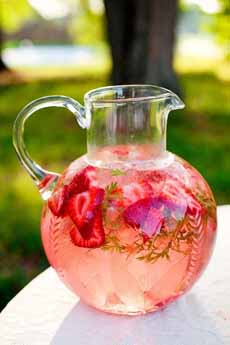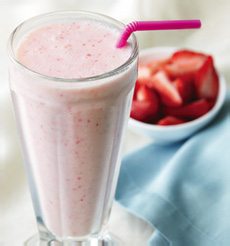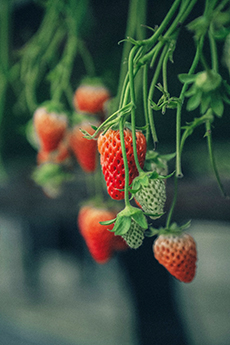FOOD 101: The History Of Strawberries For National Strawberry Month
|
|
May is National Strawberry Month. Is there anything more delightful than a sweet, low-calorie strawberry (4 calories per medium strawberry)? California and Florida are the principal U.S. strawberry-growing regions: Florida for winter berries, California for spring, summer and fall fruit. Florida strawberry growers began hand-harvesting the first fruit of the winter strawberry season in late November; and while there are imports, Florida is the major supplier of strawberries in the U.S. from November through early spring. Today, the strawberry is the leading small fruit crop in the U.S. But where did the strawberries come from? They’re originally from Europe, but wild strawberries grow in many locations, including the United States. The fruit dates back to the Roman Empire, and possibly to the Greeks before that. Fast forward a couple of millennia: The first American species of strawberry was cultivated about 1835. The strawberry got its name from the common practice of growing the berries under straw to protect them from frost. The strawberry is a member of the rose order and family*, which is why the strawberry plant sometimes gives off a rose-like aroma. A greenish-white fruit (see photos #4 and #5) grows from the flower and eventually ripens into a deep red berry. Before modern refrigeration, the fruits were picked and consumed in short order; as fresh fruit, in pies, tarts and shortcake. The berries were preserved as jam, jelly, sauce, strawberry vinegar and strawberry tonic, a medicinal drink. And to enjoy them year-round, the fruits were dried on flat rocks for several days, to be used throughout the fall and winter in breads, cakes and puddings. Today, many different varieties of strawberries are cultivated. Each has a specific color, flavor and texture (firm flesh is needed to ship long distances, for example). The particular climate and soil dictate which variety of strawberry will grow best; and different varieties were bred to thrive in different soils. Some varieties grow early in the season, some later. Strawberries must be picked at the peak of ripeness for optimum flavor, as they do not continue to ripen after they’re picked. The strawberry is the only fruit to carry its seeds on the outside. There are 200 seeds on the average strawberry. Each of these seeds has the genetic potential to become a new variety of strawberry since no two seeds are the same. This is how plant breeders develop new varieties of strawberries. Strawberries are rich in antioxidants. Studies have found that the berries inhibited the development of oral, esophageal and colon cancers. Strawberries are nutritious. |
|
|
________________ *Order Rosales, Family Rosaceae, Genus Fragaria, Species F. × ananassa. |
||




